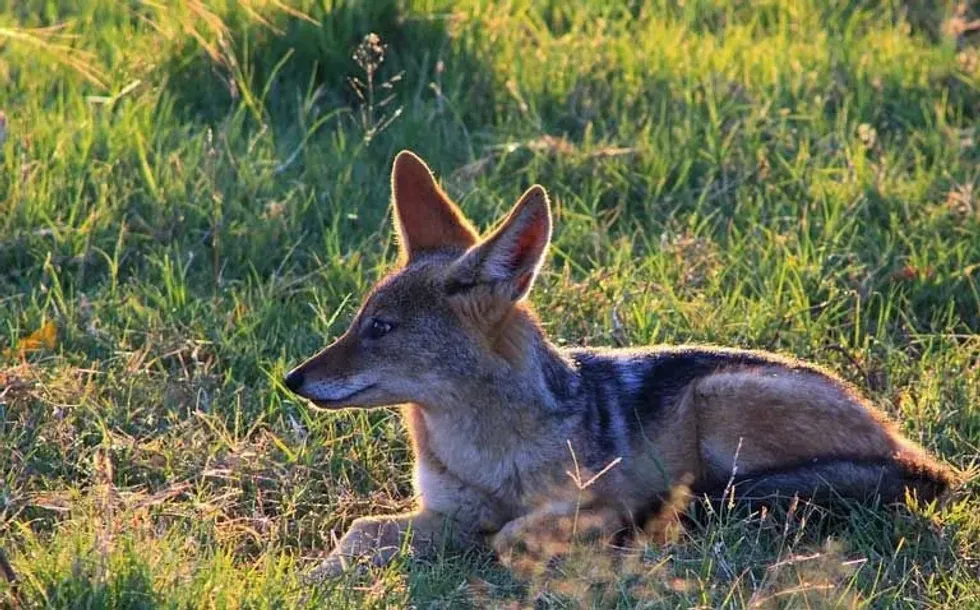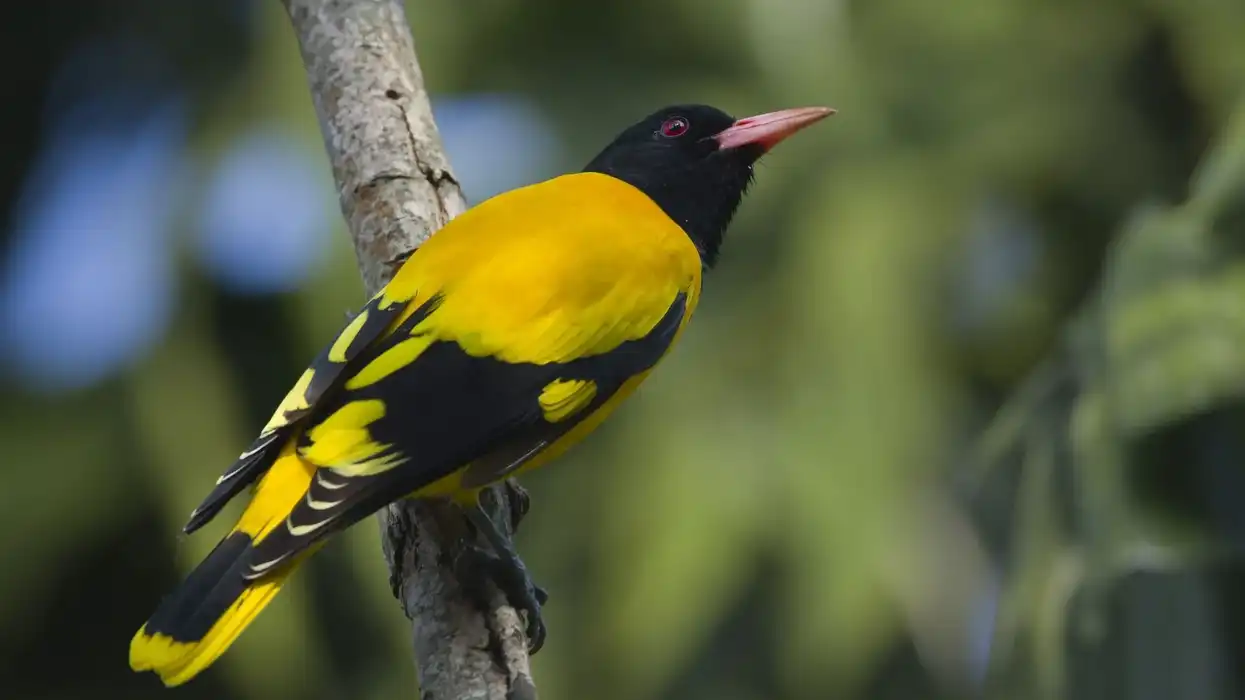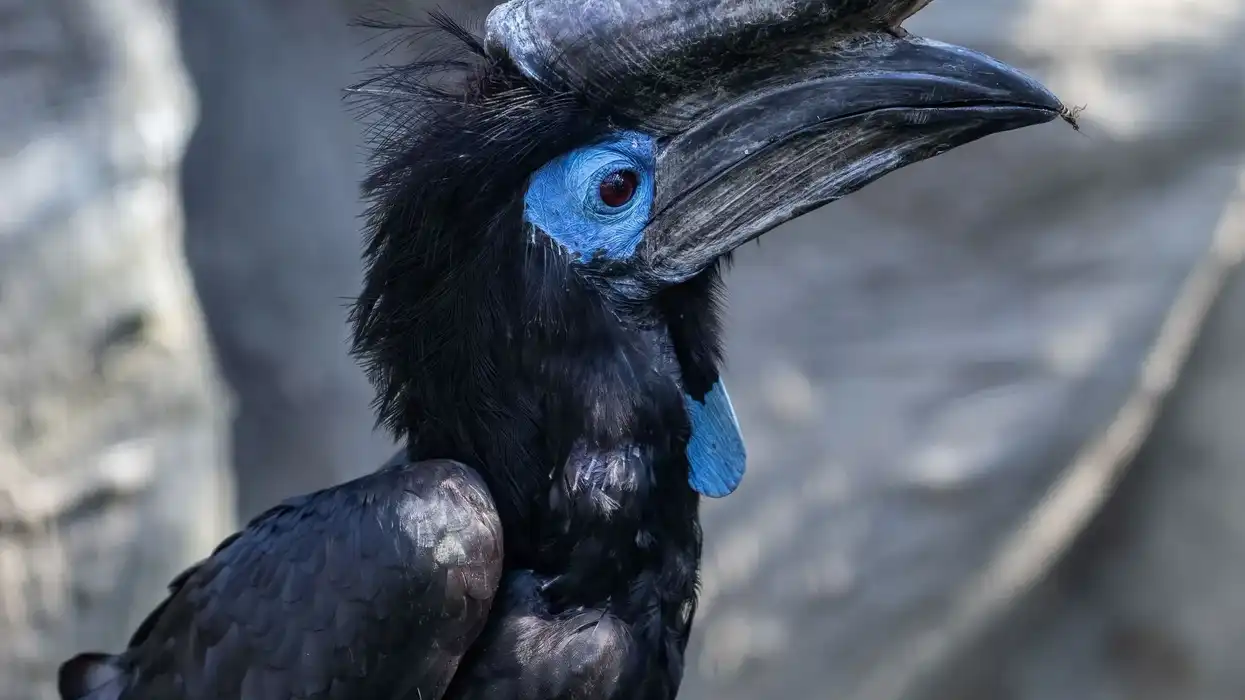The black-backed jackal (Canis mesomelas) is a dog-like mammalian carnivore endemic to the continent of Africa. Closely related to the side-striped jackal (Canis adustus), the black-backed jackal is a widespread species with two subpopulations - the cape black-backed jackal of southern Africa and the black-backed jackal of East Africa.
The black-backed jackal, one of the Canis genus' most ancient species, has rarely changed since the Pleistocene era, or roughly 2.5 million years ago. It is both a scavenger and an excellent hunter in its own right, hunting down prey or spotted stealing morsels of a lion's kill.
Moreover, they are a common pest of livestock.
The characteristic physical feature that distinguishes these animals from other jackal species is their brownish or tan coat and a black saddle that extends along the back. In addition to this, these African animals are known for their typical wailing calls.
Want to know more about these compelling African animals? Then read on for more unique black-backed jackal facts, from their diet and habitat to reproduction and physical appearance.
Enrich your knowledge of the animal world with some amazing and interesting information about the golden jackal and the bat-eared red fox.
Black-Backed Jackal Interesting Facts
What type of animal is a black-backed jackal?
The black-backed jackal (Canis mesomelas) is a species of jackal belonging to the dog family Canidae.
What class of animal does a black-backed jackal belong to?
Black-backed jackals belong to the class of Mammalia.
How many black-backed jackals are there in the world?
The exact number of black-backed jackals in the world is not known. However, according to the International Union for Conservation of Nature (IUCN), their global population is stable.
Where does a black-backed jackal live?
Black-backed jackals live in forests, shrublands, savannahs, grasslands, marine intertidal regions, and the desert regions of Africa. They may also be found in farmlands and suburbs.
What is a black-backed jackal's habitat?
The two populations of the black-blacked jackals inhabit discrete regions of the African continent - one of them is found in southern Africa including the Cape of Good Hope, Namibia, Zimbabwe, Angola, and southern Mozambique and the other population belongs to East Africa with a range that includes regions of northern Tanzania, Uganda, Kenya, Somalia, South Sudan, and southern Ethiopia.
The black-backed jackal habitat is mostly dry areas receiving an annual rainfall of 39.4-78.7 in (100-200 cm). They will mostly be found in relatively open areas that are devoid of dense vegetation growth. Besides this, farmlands or agricultural lands provide extra benefits to these animals with additional sources of food.
Who do black-backed jackals live with?
The social unit of the African black-backed jackals is pretty compact, consisting of the male and female parents and their pups. However, an exception is made during hunting when a pack of multiple jackals may be seen taking down large prey. These animals do not have cordial intra-pack relationships and the pups establish rigid dominance rankings as they age.
How long does a black-backed jackal live?
The African black-backed jackals have an average lifespan of seven years in the wild. They may live twice as long in captivity.
How do they reproduce?
Black-backed jackals form monogamous pairs, meaning that they have one mating partner for life. The mating season spans from May to August, with a gestation period of 60-65 days.
The females give birth in an underground burrow, and the litter consists of an average of four pups. Both the male and the female parent are involved in the feeding and rearing of pups, with weaning taking place at around 56-63 days after birth.
The pups are born blind and open their eyes after around 10 days. The young emerge from their den at about three weeks, can hunt by themselves when they are about six months old, and attain reproductive maturity at about 11 months of age.
These jackals are unique in that the grown-up pups from a previous year's litter help their parents raise the next litter of pups.
What is their conservation status?
According to the International Union for Conservation of Nature (IUCN) Red List of Threatened Species, the black-backed jackal species are of Least Concern.
Black-Backed Jackal Fun Facts
What do black-backed jackals look like?

The black-backed jackal species of East and Southern Africa get their name from the characteristic stretch of black hair running along the back from the shoulder to the base of the tail. This black saddle is flecked with white or silvery hair.
Their body is slender with long legs, and the head is like a dog's with a prominent muzzle and pointed ears.
The coat color is reddish-brown or a shade of tan, more obvious on the flanks and the legs. The coat assumes a darker shade of brown during winter.
The chest, inner surface of the legs, throat, and lips are whitish. The male is usually more richly colored than the female and is also slightly larger in size. A long black stripe runs along the flank and separates the dark-colored saddle from the lighter shade of the rest of the body.
In addition, these jackals have a bushy tail with a black tip. Their teeth are robust, with sharp incisors suited for a carnivorous diet.
How cute are they?
They are definitely adorable and cute!
How do they communicate?
The species of black-backed jackals of East and South Africa are very territorial and actively defend their territories by depositing feces or urinating along the range boundaries. Scent marking is also used, and the mating pair is usually very aggressive towards intruders.
Additionally, this particular jackal species is very loud and marks its territory with loud calls. Particularly loud among the population are the South African black-backed jackals. They may cackle, growl, whine, yell, woof, and make other noises.
The high-pitched whining howl is initiated by an individual to announce its presence, and others join in to form a chorus. When trapped, they may cackle like a fox. Alarm calls sound like short, high-pitched yelps.
How big is a black-backed jackal?
The black-backed jackals have a body length ranging between 26.5–32 in (67.3–81.2 cm) and have a shoulder height of 15-18.9 in (38-48 cm). These jackals are slightly smaller than the side-striped jackal, especially in terms of shoulder height. The golden jackals are the largest jackals known to us.
How fast can a black-backed jackal run?
Jackals can attain a maximum speed of 40 mph (64.4 kph) while running.
How much does a black-backed jackal weigh?
An adult black-backed jackal weighs around 13.2-28.7 lb (6-13 kg) on average.
What are their male and female names of the species?
Male and female jackals do not have specific names.
What would you call a baby black-backed jackal?
A baby black-backed jackal is called a cub.
What do they eat?
The diet of this jackal comprises a wide variety of animals. Scorpions, spiders, millipedes, termites, crickets, grasshoppers, beetles, birds, antelopes, hares, seals, fish, and livestock animals are common in their diet. The jackals also scavenge on the kills of leopards and lions.
Are they dangerous?
While jackals are mostly dangerous to small and medium-sized animals, their territorial nature might make them aggressive, and they may attack humans. Besides, they are carriers of deadly diseases such as rabies, canine adenovirus, canine distemper, canine parvovirus, and African horse sickness. Besides this, they may also be carriers of a number of parasites.
Would they make a good pet?
The black-backed jackals are infamous for preying on livestock. Hence, they are not preferred as pets or domestic animals.
Did you know...
Black-backed jackals are frequently hunted down due to the immense loss of livestock they cause.
African wild dogs and leopards are the natural predators of the black-backed jackal.
The Kung people believe that this jackal's typical black saddle is actually a burn mark that the animal received as a punishment for being a scavenger. According to another folklore, the jackal got its saddle because it carried the Sun on its back.
How do black-backed jackals protect themselves?
Black-backed jackals are known for aggressively defending their territories by leaving scent marks, feces, and urine along the territory boundaries. They may also spend the hotter parts of the day hiding away in rock crevices and holes.
The Black-backed Jackal's Feeding Process
Black-backed jackals are carnivores and feed on different vertebrates and invertebrates. Suckling of pups is done initially, and they are later fed regurgitated food (swallowed food brought up to the mouth) until they are old enough to forage and hunt with the adults.
Here at Kidadl, we have carefully created lots of interesting family-friendly animal facts for everyone to discover! Learn more about some other mammals, including the fox and the fennec fox.
You can even occupy yourself at home by drawing one on our jackal coloring pages.










